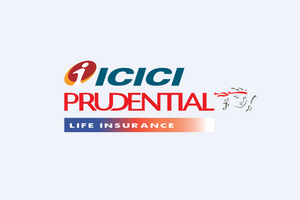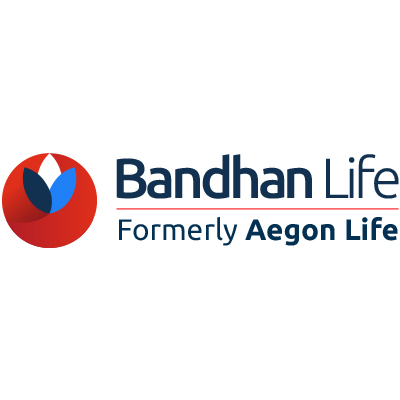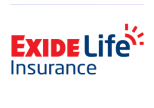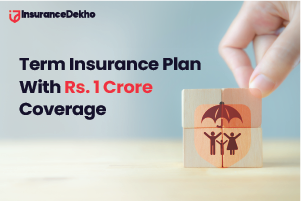All You Need to Know About Increasing Term Insurance Plan
Individuals' financial situations differ from one another and vary throughout their lives. As we get older, our responsibilities expand, and the coverage you pick today may not be adequate to meet the family's future financial obligations in your absence. An increasing term insurance plan comes in handy in situations like these. Continue reading to learn more about the Increasing term insurance plan.
Table of Contents
What is an Increasing Term Insurance Plan?
The coverage amount specified by the insured at the start of the policy rises at a specific rate every year under the increasing term insurance plan. However, the policy's premium rate may or may not remain constant during the policy's term. The increasing term insurance policy is the inverse of the decreasing term insurance policy.

The coverage under the policy when upgrading the term insurance plan is determined by the policy buyer's health at the time of purchase. The increasing term insurance plans get specially designed with the changing conditions of individual life and the rising inflation rate in mind. Along with the benefit of giving more coverage to the insured's family, increasing term insurance plans have numerous other advantages, including the following.
- Annual Coverage Increase: As said, the assured sum rises every year. Some plans contain a cap on the maximum increase in the assured sum. Once the cap limit gets reached, the increase ceases, even if the term plan is still running. The pace of growth of the money pledged can get expressed as a percentage absolute number. In both cases, the rate of increase is determined in advance and remains consistent during the length of the plan. If the amount gets multiplied by a percentage, it can grow at a Simple or compounded rate, although the former is more usual.
- Flexibility in Death Benefit Payout: Increasing term life insurance policies, like regular term life insurance plans, pay only the death benefit guaranteed applicable (after increase) at the commencement of the policy year in which the life insured died. While the bulk of increasing term insurance policies provides a lump sum payment at death, a few newer plans give a monthly or yearly income. Following the insured's death, the death benefit gets paid in a lump sum with monthly, yearly, or total monthly or annual instalments for a specific term.
- Riders for Enhanced Coverage: Riders are optional coverage additions that, when selected, broaden the extent of coverage. Riders may get added for a nominal extra charge. A few riders get included in the majority of rising term plans.
- Accidental death and disability benefit rider- This rider provides an additional payment due to accidental death or disability during the plan's term.
- Critical illness rider- If the insured person contracts any Critical diseases specified in the rider during the policy tenure, the rider will pay an additional amount.
- Waiver of premium rider- If the life insured is killed in an accident or becomes incapacitated, this rider waives future premiums for as long as the plan is in place.
- Comparable Premiums: Even though the coverage increases every year, the premiums for the plan often remain the same for the length of the policy. While computing the premium amount in advance, the corporation adjusts for the growth in the sum assured, resulting in a constant premium. Premiums paid in the early years are frequently more than necessary to compensate for decreased premiums as the sum assured rises.
Why Should I Purchase More Term Insurance?
Investing in an Increasing Term Insurance Plan has various advantages. Among these are:
Effective anti-inflation strategy: As we all know, inflation continues to climb yearly, so an insurance strategy is crucial. The growing sum promised under an increasing term insurance plan covers the incremental expenditures incurred over time. Your family will get appropriately safeguarded even if you are not present.
Goals are aligned: Regardless of when you purchase the increasing term insurance policy, the rising life cover will correlate with your life goals.
Affordability: The most cost-effective life insurance policy is an Increasing term insurance policy. The insurers charge a regular premium amount, so you don't have to worry about budget variations.
Tax advantages: Like any other term insurance plan, an Increasing Term Life plan allows you to deduct premiums paid under Section 80C. Your beneficiaries will also get a tax-free death benefit. These tax breaks for term insurance help policyholders save money over time.
Who Should Purchase Increasing Term Insurance?
The increasing term insurance plan will help young investors. Because you start early, your insurance coverage develops in lockstep with your future commitments. Furthermore, increasing term insurance is just what you need if you want a life insurance plan to protect you against economic inflation.
An increasing term insurance plan is a way to get financial stability, whether you have recently begun working or running a business. This plan provides adequate coverage to meet future growing financial needs as your duties and liabilities develop. However, before selecting term insurance coverage, it is necessary to compare them.
How Does Your Term Insurance Coverage Grow?
There are several strategies to maintain your term insurance coverage growing in tandem with your responsibilities:
- Purchase more life insurance: One of the simple ways of increasing your life insurance coverage is purchasing additional life insurance policies. As your responsibilities grow, you can simply buy policies that align with your growing requirements.
- Purchase a policy with life-stage increment options: You may ask the insurer to increase your policy's sum assured at predetermined intervals throughout your life. However, this option should be available when purchasing the coverage.
- Purchase increasing term insurance: With increasing term insurance, your plan's amount rises automatically yearly. You will not be required to purchase another policy, nor will you be required to file an increase request.
New Policy vs Life-stage Increment Benefit vs Increasing Term Cover Policy
It’s understandable that with growing responsibilities, you want to ensure maximum coverage from your insurance plans. In such a scenario, what should you choose? Buying a new policy or choosing between life-stage increment benefit and increasing term cover. Let’s see the differences:
|
Investing in a New Policy |
Life-Stage Increment |
Increasing Term Cover |
|
Every time you go through the underwriting and application procedure. Even the medical examination |
There is no requirement for underwriting when requesting an increase. |
You do not need to request an increase in coverage from the insurer. |
|
The premium cost is expensive. As you age, the premium cost for each new insurance will be the highest of the three possibilities. |
The premium increases with each increment but is less than the premium for a new policy for the same sum insured. |
The premium remains constant during the payment period. |
|
You may purchase unlimited policies as long as the total value guaranteed does not exceed 20 times your yearly take-home pay. |
Three increments are permitted: marriage, first child, and second child. Your total sum assured can double. |
Every year, the sum insured rises until it gets double the initial base sum assured. |
Conclusion
In conclusion, an Increasing Term Insurance Plan provides an ideal solution for those seeking a cost-effective way to safeguard against life's uncertainties while keeping pace with growing financial responsibilities and inflation. Offering yearly increments in coverage, flexible death benefit payouts, additional riders for enhanced protection, and steady premiums, these plans accommodate life's changes and evolving needs. They not only ensure that the financial future of your loved ones is secure but also offer significant tax benefits. These plans represent a proactive strategy for financial stability, ideal for young investors. When buying term insurance, it is crucial to consider your life stage, financial goals, and anticipated future needs to make an informed decision.
FAQs
What distinguishes term insurance from life insurance?
A: A life insurance policy contains maturity benefits, but a term insurance plan does not. It simply entitles the policyholder's nominee(s) to the sum assured in the event of the policyholder's death within the plan term.
What distinguishes a term insurance policy from an accidental insurance policy?
A: An accidental insurance policy gives a death payout if the policyholder dies in an accident. A term insurance policy covers death for any reason, natural or accident.
Can numerous claims be considered?
A: Multiple claims from various insurers may get considered, provided that these claims and their specific nature got reported at the time of policy purchase.
What are the tax advantages of a regular-term insurance policy?
A: Tax advantages under Section 80C are available for a term insurance plan up to Rs. 1.5 Lac in any given fiscal year.









































